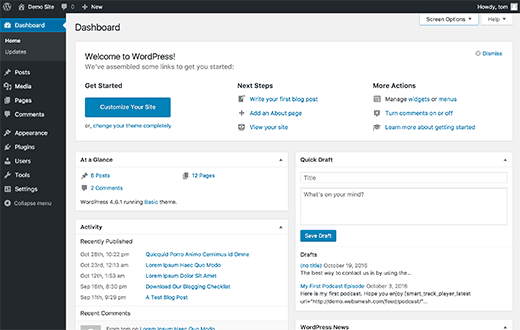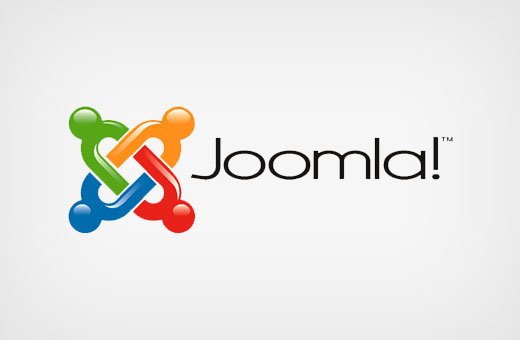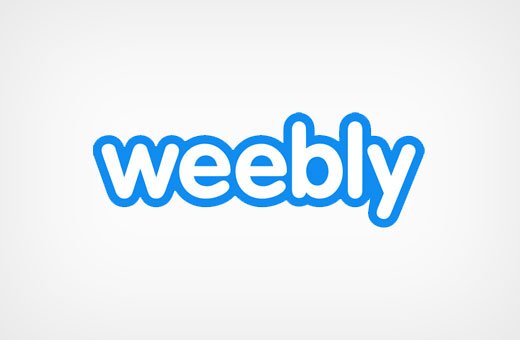How to Choose the Best Blogging Platform in 2018
Are you looking to start your own blog, but can’t figure out how to choose the best blogging platform? It’s a tough choice, since there are several different blogging platforms out there. How do you find out which one is right for you? In this article, we’ll help you choose the best blogging platform by going over the pros and cons of the most popular options.
Here are the blogging platforms we’ll be comparing in this article. If you’re interested in a particular platform, you can click the link to skip ahead in the article.
Choosing The Best Blogging Platform – What to Look for?
Before diving in the list, it helps to know what kind of platform you’re looking for.
As a beginner, you’ll want a blogging platform that’s easy to set up, and doesn’t require any coding skills.
You’ll also need to think about what kind of blog you want to create, now and in the future.
As your blog grows, you may want to change the look of your site and add more features for your growing audience. That means it’s important to choose a blogging platform that’s flexible, with room to grow.
Starting off with the wrong platform can make it very difficult to switch later on.
Lastly, even if you don’t have plans to make money yet, it’s smart to make sure you have the option to do so in the future.
With all that in mind, let’s compare the best blogging platforms for beginners.
1. WordPress.org

WordPress.org is the world’s most popular blogging software.
(Note: It’s easy to confuse WordPress.org with WordPress.com, which is a blog hosting service next on this list. See our guide on the difference between WordPress.org and WordPress.com.)
WordPress.org is an open source software platform which allows you to build your website or blog on your own. It is a self-hosted solution, which means you will need to sign up with a WordPress hosting provider.
Pros
- WordPress.org gives you control over every aspect of your website.
- You can grow your blog and add extra features like forums, online store, and membership options to it.
- There are thousands of free and premium themes available for WordPress. This allows you to create a beautiful website that stands apart from the crowd.
- You also get access to more than 45,000 free plugins. These plugins are like apps for your WordPress blog, allowing you to add all kinds of new features.
- WordPress is search engine friendly.
Cons
- Managing your own website comes with a bit of a learning curve.
- You will have to manage your own backups and security.
Price:
WordPress.org software is free, but you’ll need to buy a domain name (about $14.99/year) and hosting (usually starting from $7.99/month). However, WPBeginner users can get started for only $2.75 per month with Bluehost, an official WordPress recommended hosting provider. They are offering our users 60% off on hosting and a FREE domain name.
See our guide on how to start a WordPress blog for complete step by step instructions.
2. Wix

Wix is a hosted platform to build websites. It offers an easy way for small businesses to build a website using drag and drop tools. You can also add a blog to your website by adding the Wix Blog app.
Pros
- You can customize your site using dozens of templates and third party apps.
- Build your site with easy drag and drop tools; no coding skills required.
- Setup is quick and easy.
Cons
- The free account is limited and shows Wix branding and ads on your site.
- Free third party apps are limited.
- Once you choose a template you cannot change it.
- Ecommerce features are limited to paid plans, and even those features are limited.
See our article on Wix vs WordPress for a detailed comparison of the two platforms.
Pricing
The basic Wix website builder is free. You can add a custom domain for $4.50/month. Their premium plans start from $8.50/month and go up to $24.50/month.
3. WordPress.com

WordPress.com is a blog hosting service offered by Automattic, a company created by WordPress.org cofounder Matt Mullenweg.
WordPress.com offers a basic blog hosting service for free. You can purchase additional options like a custom domain name, additional storage, and other premium services.
Pros:
- No setup required.
- Easy to use and manage.
Cons:
- Limited options to extend your site.
- You cannot run advertisements on your blog.
- You do not own your blog and WordPress.com can suspend your account if they find you are violating their terms of service.
Price:
The basic WordPress.com account is free, but it will have WordPress.com ads and branding. You can upgrade to their Personal plan for $2.99/month (billed yearly) to remove WordPress.com logo and advertising from your website, and get a custom domain (such as www.yoursite.com).
For $8.25/month (billed yearly) you can get additional design tools and extra storage.
Because of the similarity in names, beginners often start with WordPress.com thinking they are getting the powerful WordPress.org software. After seeing the limitations, users often end up switching from WordPress.com to WordPress.org to have more features and control over their website.
4. Blogger

Blogger is a free blog hosting service. Acquired by Google in 2003, it offers a quick and easy way to create a blog for non-tech-savvy users.
Pros:
- Blogger is free.
- It’s easy to use and manage without any technical skills.
- Has the added advantage of Google’s robust secure platform and reliability.
Cons:
- You’re limited to basic blogging tools, and can’t add new features as your blog grows in popularity.
- Design options are limited, with fewer templates available. Third party templates for Blogger are often low quality.
- Blogger does not receive frequent updates or new features.
- Google can suspend your blog at any time, or even cancel the Blogger service altogether. (They have a history of abandoning projects without warning, such as Feedburner.)
For more pros and cons of Blogger, see our comparison of WordPress vs Blogger (Pros and cons).
Eventually as their blog grows, users end up switching from Blogger to WordPress to get more features and control over their website.
5. Tumblr

Tumblr is a little different than other blogging platforms. It is a microblogging platform with social networking features including following other blogs, reblogging, built-in sharing tools, and more.
Pros:
- Tumblr is free and very easy to use.
- It has an integrated social media component.
- As a microblogging tool, Tumblr makes it easy to quickly blog videos, GIFs, images, and audio formats.
Cons:
- Tumblr comes with a limited set of features that you cannot extend as your blog grows.
- There are many themes available for Tumblr, but they can’t offer additional features.
- Backing up your Tumblr blog or importing it to other platforms is difficult (see our guide on how to move from Tumblr to WordPress).
Pricing:
Tumblr is free to use. You can use a custom domain (purchased separately) for your Tumblr blog, and there are also third party themes and apps available to purchase.
6. Medium

Launched in 2012, Medium has grown into a community of writers, bloggers, journalists, and experts. It is an easy-to-use blogging platform with limited social networking features.
Pros:
- Medium is easy to use, with no setup required and no coding skills needed.
- It allows you to reach an existing online community of people of similar interests.
- You can focus solely on writing, instead of designing a website.
Cons:
- Features are very limited in terms of design or building a brand.
- Medium owns your audience, so losing your blog means losing all your followers.
- You cannot run your own ads to make money.
For more detailed comparison, see our guide on WordPress vs Medium – which one is better?.
Pricing:
Medium is free to use.
While the platform looks attractive at first, the lack of monetization and control leads to most people switching from Medium to WordPress.
7. Squarespace

Squarespace is a website building service that allows you to create beautiful websites using easy drag and drop tools.
It focuses on small business owners who are looking for an easy way to create an online presence.
Pros
- Squarespace is simple and easy to use for beginners who aren’t very tech-savvy.
- It has beautiful professionally designed templates.
- It separately offers domain name with SSL/HTTPs and eCommerce stores.
Cons
- Squarespace is limited to the features built into their proprietary platform.
- The Personal plan limits you to 20 pages, a blog, and 2 contributors.
- Integrations are limited to a select few services and tools.
See our guide on WordPress vs Squarespacefor a more detailed comparison.
Pricing:
Pricing for their Personal plan starts at $16/month, or $12/month if you pay for the year in advance. For the Business plan, pricing starts at $26/month, or $18/month billed annually.
Often users end up switching from Squarespace to WordPress to minimize their expenses and add more features on their websites.
8. Joomla

Joomla is an open source software content management system, just like WordPress.org. It’s also a self-hosted solution, which means you will need a domain name and web hosting to use it.
Pros
- Joomla is extremely powerful and flexible, and can be used to build any kind of website or blog.
- You can choose from hundreds of templates to customize your site’s design.
- Extensions (apps for your Joomla site) are available to add more features.
Cons
- The Joomla community is much smaller than WordPress community, so there are fewer themes and addons than for WordPress.
- Support options are limited to community support. Paid support is hard to find and can be costly.
- You will be responsible for managing your backups, updates, and security.
For more on this topic you may want to read our comparison of WordPress vs Joomla vs Drupal.
Pricing
Joomla is free but you will need domain (about $14.99/year) and hosting (usually starting from $7.99/month) to use it. If you use SiteGround, then you can get started for $3.95 per month, and you will get a free domain.
9. Ghost

Ghost is a minimalist blogging platform with limited features focused on writing blog posts. It’s available as a hosted platform, and also as a software that you can install and host yourself. We’ll take a look at both options.
Pros
- Focused on blogging and writing.
- Clean, clutter-free, and intuitive user interface.
- Written in JavaScript, so it’s super fast.
- No setup required for the hosted version.
Cons
- Not easy to customize with apps.
- The simplified user interface means options are very limited.
- Not enough themes to change appearance of your site.
- Complicated setup if you install it yourself.
Take a look at our comparison of WordPress vs Ghost for more details on the topic.
Pricing
The self-hosted version needs a custom domain (about $14.99/year) and web hosting (starting from about $7.99/month). Pricing for the hosted version starts at $19/month for 1 blog with a 25000 page view limit.
10. Weebly

Weebly is a hosted platform that allows you to build your website using drag and drop tools. It comes with dozens of ready-to-use themes that you can customize using their web-based interface.
Pros
- Easy-to-use drag and drop website builder with no technical skills required.
- Quick and easy setup, since Weebly will host your site for you.
- Weebly’s free plan allows you to try out the service before buying.
Cons
- Built-in features are limited, and you can’t add new features.
- Limited integration with third party platforms.
- Exporting your site from Weebly to another platform is difficult.
For more details on this topic see our comparison of WordPress vs Weebly.
Pricing
Weebly’s paid plans start from $8.00/month, and include limited features. To unlock all the available features, you could pay up to $49.00/month.
It's very interesting and informative post I have ever seen before
HELPFUL INFORMATION FOR NEW BLOGGER. THANKS
Nice informative post
Very helpful article